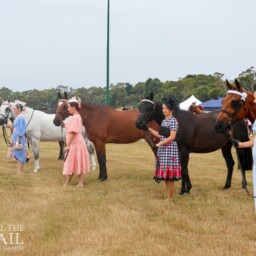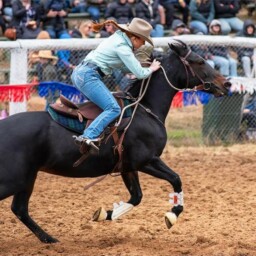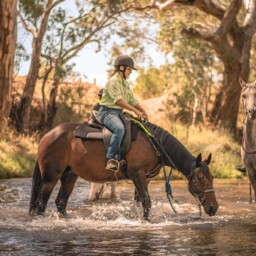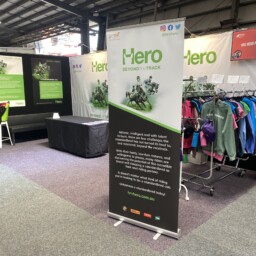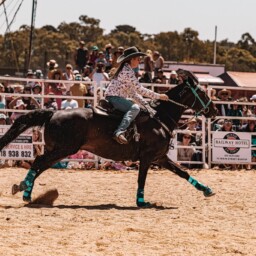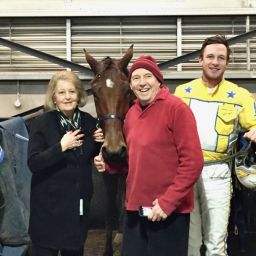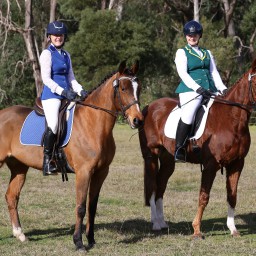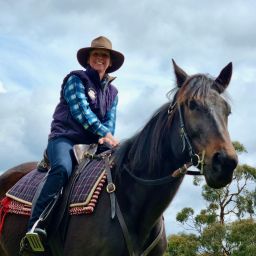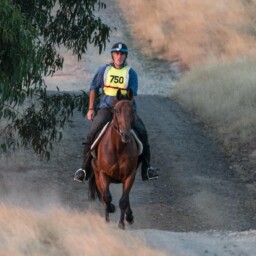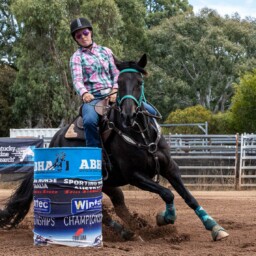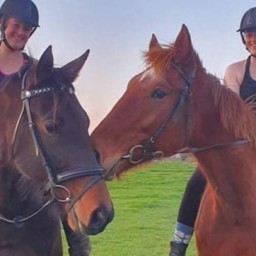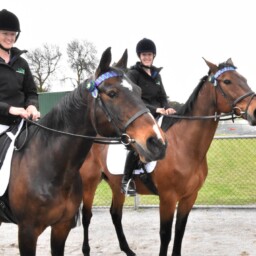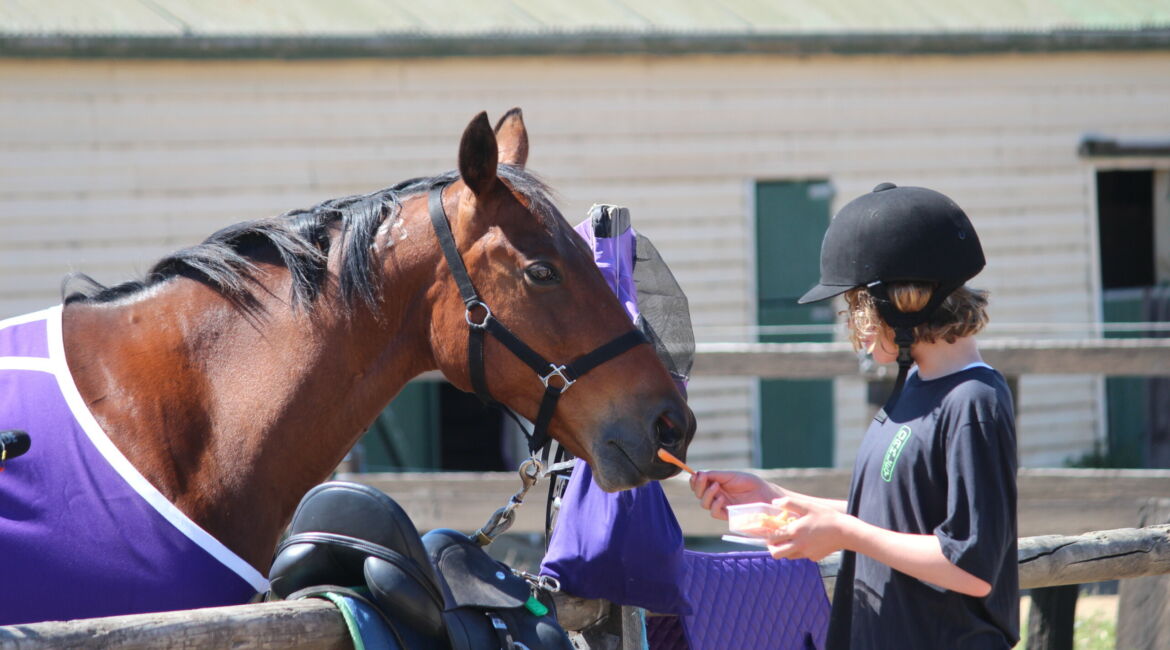
For fourteen-year-old rider Ben Ostanin, becoming a horseman changed his life.
Twice a week Ben swings into the saddle of his trusty steed Samson, under the watchful eye of the friends by his side, and he feels a sense of understanding and calmness flow up through the saddle.
Ben and Samson share a unique relationship, with the gentle standardbred gelding bringing the best out of his riding partner during their sessions together at the Oaklands Riding for the Disabled (RDA) centre.
“Words can’t describe how much Samson helps Ben”, explains Ben’s mother Sen.
“Samson’s like a psychotropic medication on legs. The calmness, the understanding, the receptive language, the vocalisation; it’s just been phenomenal.
“We had a period where Ben was quite stressed and he was lashing out kicking, hitting, biting and pinching. All of that has dissipated since he’s been riding Samson and he is able to regulate himself.
“As soon as Ben is on Sampson you can immediately see the effects that it has on him and the way Samson understands what’s going on and awakens neurons in Ben’s brain”.
For Samson, RDA is pretty much all the unraced trotting-bred gelding has known in his thirteen years of life.
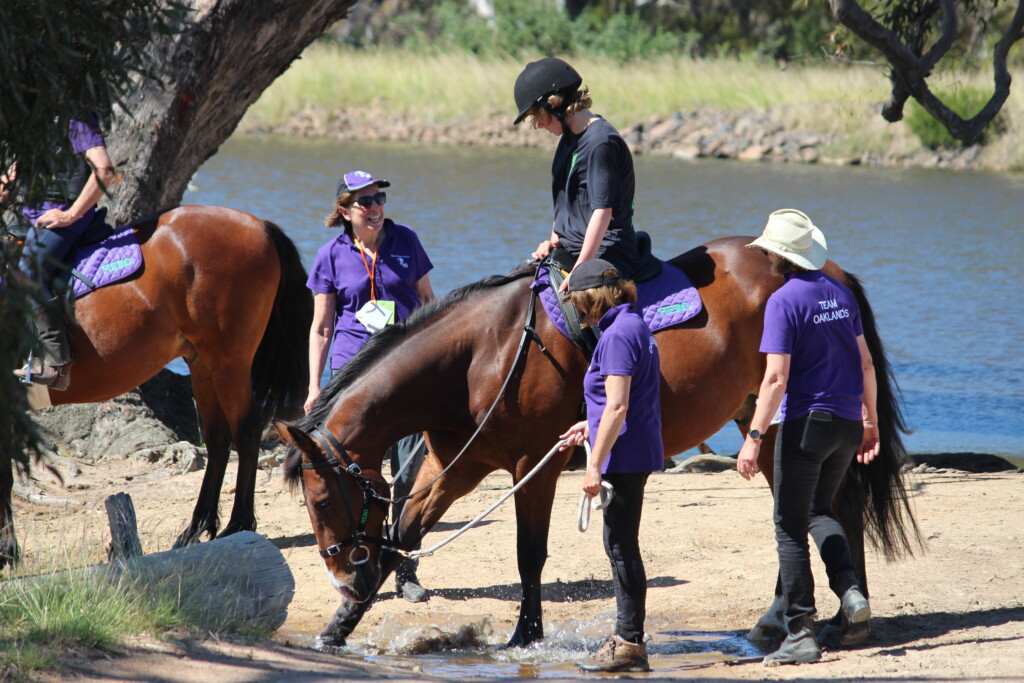
Soon after, another standardbred, JJ, joined the Oaklands RDA team, having followed a bittersweet pathway to his new role.
JJ was the apple of passionate young harness racing trainer/driver Danielle Lewis’ eye; she simply adored him. In 2014, Danielle tragically passed away in a training accident.
Prior to her passing, Danielle had spoken to her friends about her love for JJ and instinct that he would make a lovely RDA prospect. Danielle’s wishes were fulfilled when JJ successful passed retraining and found his new family in RDA.
Like his fellow standy friends, JJ took to his role at RDA like an old hand.
“Within four weeks of JJ coming into the program, we were like ‘this horse is really, really good’”, explains long-serving RDA Oaklands President Fiona Orr.
“Normally we have three months of training, but JJ was superb and ready to go”.
JJ has provided much love and laughs, with his quirky nature, over the past eight years in his RDA family, partnering with many of the twenty-two riders who pass through the Oaklands centre’s gates each week.
“Speaking in generalities, as with any horse, they are a mirror for reflecting how we feel. On the back of that, they are the perfect regulator for our emotions”, says Oaklands volunteer Linda Telai.
“I think J intuitively reads people’s/children’s body language, tone of voice and energy. He is calm, patient and allows for regulation”.
Taking the fast-track into RDA is testament not only to how wonderful JJ is, but a demonstration of qualities which many RDA standardbreds are being recognised for.
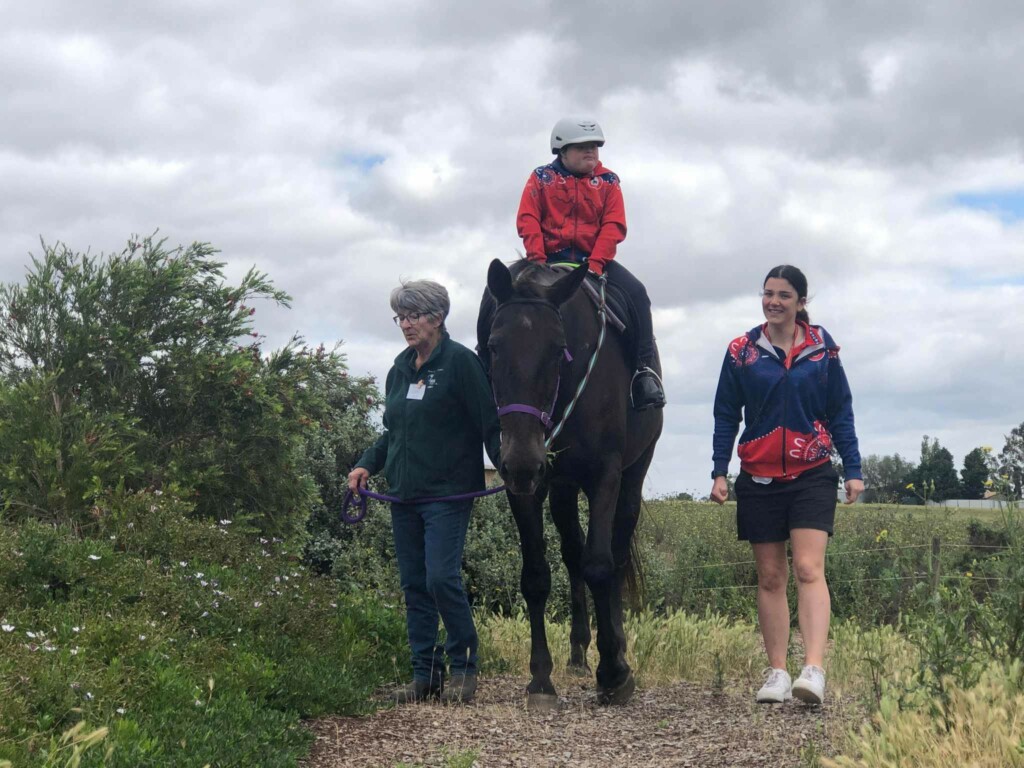
Trained by passionate harness professionals Peter Lane and Anita Burke, the decision was made to rehome Samson as a three-year-old due to lacking ability on the track.
Within his very first few rides under saddle, it was clear that Samson was destined to do special things in his new vocation.
Developed under the guide of Raising the Standards, a retraining program with many years of experience preparing standardbreds for RDA, Samson ticked the boxes and plans were put in place for a meet and greet with a prospective centre.
Although on the younger side of what RDA will typically consider for their intensive programs, Samson was assessed and transitioned quickly into his new chapter as a RDA horse.
Samson proved his suitability for the role by competing in a statewide RDA competition just three weeks after entering the program.
In the years since, Samson has changed RDA centres and landed in the Oaklands paddocks, which he shares with fellow harness racing retirees Stuart Littlehorse and JJ.
Together, the three geldings are proudly shining a light on the abilities and sensational temperament of the standardbred.
Stuart Littlehorse, affectionately known as ‘Stu’, was another youngster rehomed before his racing career could even begin.
Owned by John Coffey, a Breeding Consultant at preeminent standardbred stud Alabar Farms, Stu played the role of ambassador and ‘one-horse welcoming committee’ at the Raising the Standards headquarters, before the decision was made to refine his training for RDA and send him to the Oaklands centre.

“The calming influence that the horse can have on a somewhat agitated or nervous child when they first arrive, compared to what they do when they finish, and to see that smile on their face is just incredible”, says RDAV President Tanya Twaits.
“Something RDA centres have been most surprised about when they’ve taken on a standardbred is how quickly they can be moved into the program.
“There’s specialised retraining required of any horse joining RDA, but centre staff are being surprised with how quickly standardbreds are assimilating into the environment and working with the different children and their different abilities.
“There’s quite a bit of equipment required at a centre, because it’s about building those skills with particular riders, so the horse has to be introduced to all of that. It’s really amazing to see how quickly they’ve adapted and they don’t seem to be too fazed by anything that gets thrown their way”.
It seems the word of the standardbred is spreading throughout RDA centres, with eight out of thirty-five Victorian centres currently including at least one standardbred in their program and a growing list of new centres expressing interest in taking on a harness racing retiree in the future.
With glowing reviews, such as Bundoora RDA describing their beloved standardbred Pepper as ‘the most patient, adaptable, complying, loving and funny horse you will ever meet’ and Swan Hill RDA singing the praises of ‘unflappable and trustworthy with a capital T’ gentle giant Mickey, it’s easy to see why centres are putting their hands up to invite a standy into the fold.
“Our standardbred Max is a very good fit for Mornington RDA [being a harness-only centre with no riding offered], as we need a bigger, strong horse able to pull the large carriage”, says, Janet Moran.
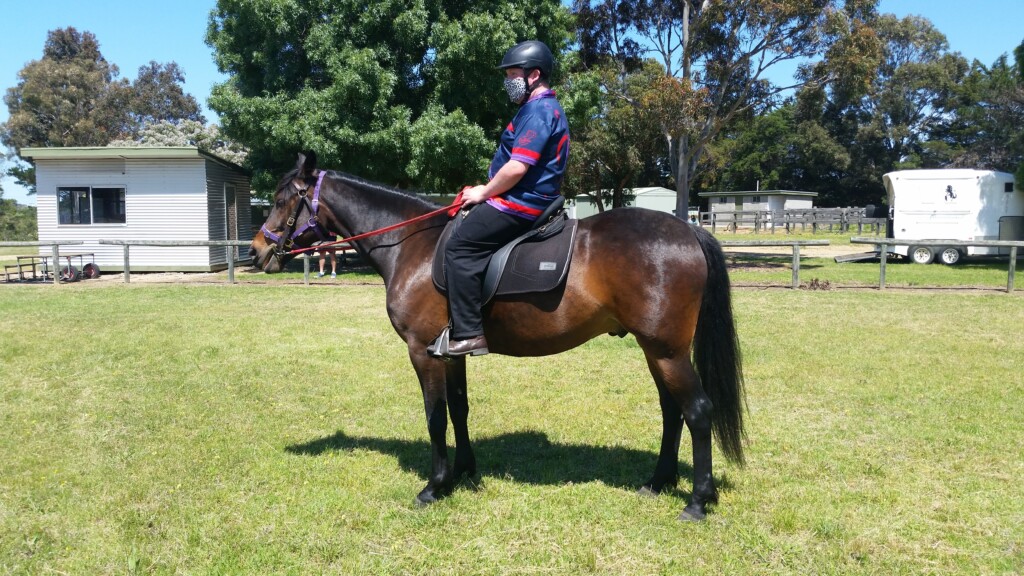
“The clients love Max because he can go fast. They enjoy the feeling of freedom, the wind in their hair and all of the things that they don’t normally get”.
Many of the RDA centres incorporating standardbreds into their programs have been encouraged by volunteers and coaches with an existing passion for the breed.
This is the case with Eddie, who has recently joined the Bairnsdale RDA team alongside fellow standardbreds Archie and Trooper.
Eddie and Archie’s owner, long-time volunteer and current President of Bairnsdale RDA Julie Coster, has had an affinity with standardbreds since spanning for some decades.
“I’ve been involved with standardbreds and ridden them since I was a teenager”, Julie says.
“In that time I’ve developed a lot of admiration for them, being so quiet and easy to get along with.
“Bairnsdale RDA runs classes fortnightly on a Monday, running programs for around twenty-one students from the manpower of a similar number of dedicated volunteers.
“Although he’s still learning, Eddie has taken well to his new role, even though he takes some persuasion to get going; he’s a lovely boy, albeit a bit lazy!
“I bought Eddie from Hero Retrainer Rafiki Equestrian, run by Julie Bramucci out of St Leonards. The Hero program is doing such great work”.
Taking a big picture view of the enrichment and opportunities offered through RDA, it’s clear that the benefits are enjoyed not just by the students, but equally by the horses too.
Often retiring from racing young, fit and with many years of love to give, the adaptability and willingness of the standardbred makes them a natural fit for the life of adoration awaiting them at RDA. With RDA centres around the state calling for new horses to meet the demands of student enrolment requests, a recent collaborative initiative was launched to bridge the gap between harness racing and RDA.
The Heroes for RDA program brings together two pillar organisations operating in the life after harness racing sector, HRV Hero and Raising the Standards, to assist RDAV to source more horses.
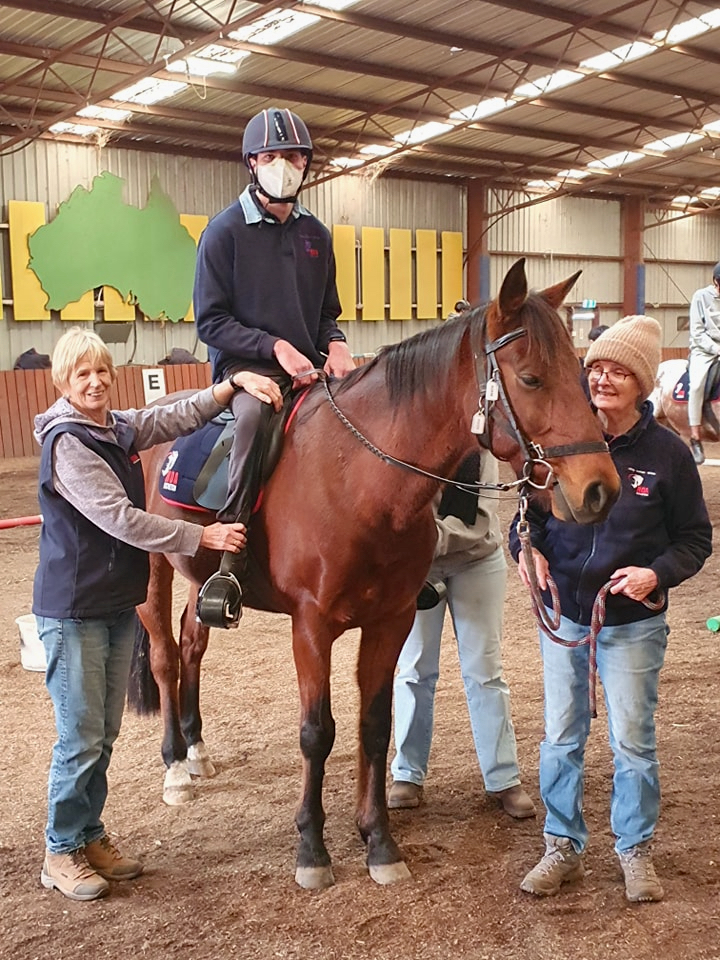
“The Heroes for RDA program is helping to streamline the process so that more standardbreds can secure a bright future in RDA centres”, says Hero Operations Manager, Tara van der Minne.
“There are many moving parts to this initiative, but it’s exciting to have such a passionate team working cohesively towards meaningful outcomes for the Heroes for RDA standardbreds and the many people whose lives will be touched by these wonderful horses”.
The Heroes for RDA program recently placed its first horse, Adam, with the Doveton RDA centre, operating out of Myuna Farm.
“Adam really takes everything in, he will now stand tied up during a session and basically relax and nearly go to sleep”, says RDA Doveton Horse Welfare Office Lynda Coad.
“Adam loves to please and enjoys the human contact. He is very easy to handle and continues to amaze us every session”.
Like many of his standy peers, Adam dazzled his RDA peers with his swift integration into the program, demonstrating readiness to carry riders with significant physical disabilities within his first three months of training.
With a steady flow of horses ready to begin their next chapter beyond the track and the RDA teams at the ready to invite a standardbred into their herd, the future looks very bright for everyone involved in this wonderful collaboration.


